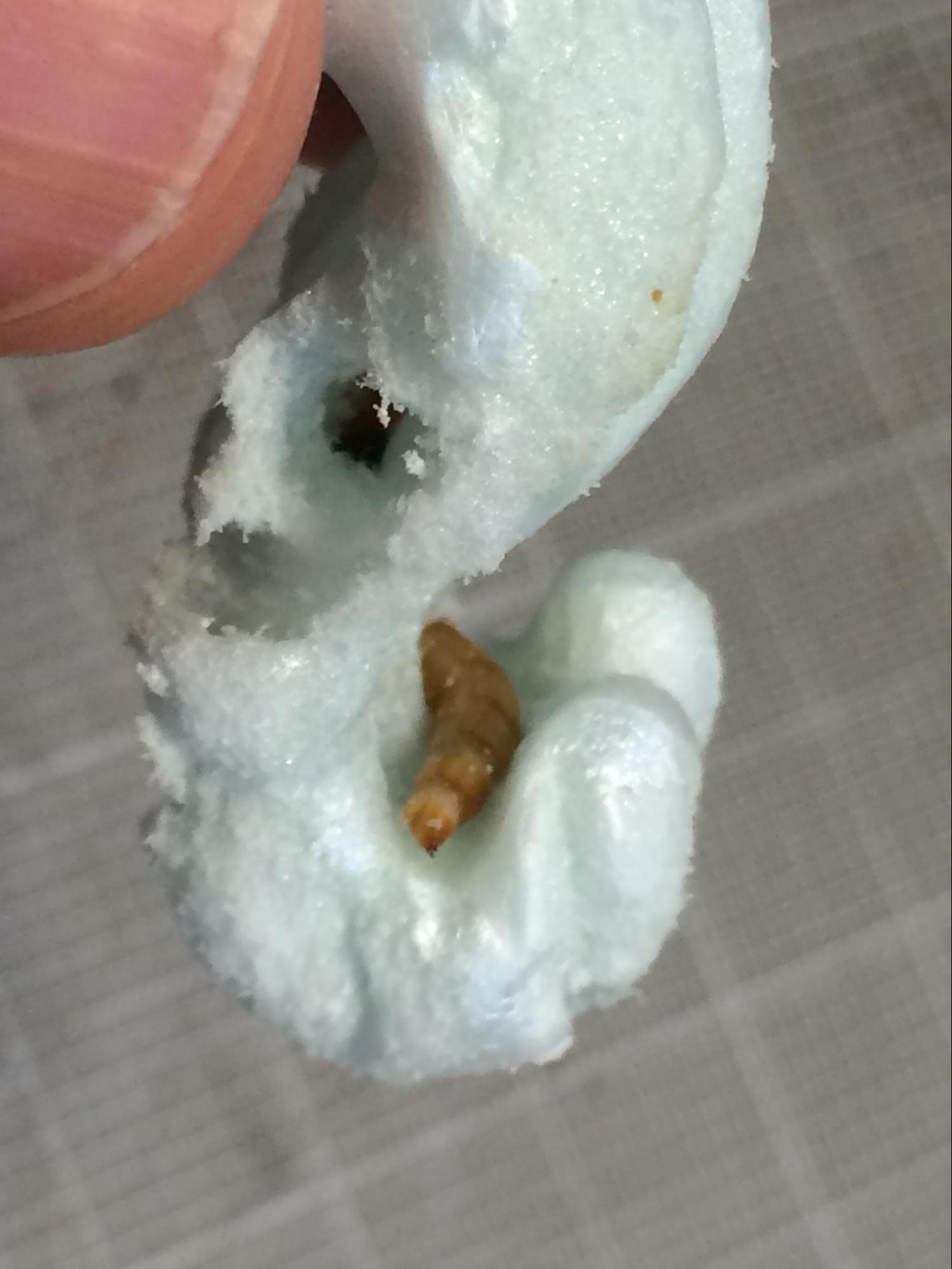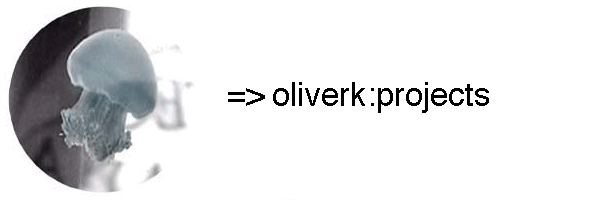Styrofoam composting
A protocol for Composting Styrofoam using Mealworms
As adapted by Oliver Kellhammer (kellhamo@newschool.edu)

Styrofoam debris on the shores of the East River, NYC (O. Kellhammer)
Styrofoam is a persistent and difficult to recycle component of the global waste stream. In research at Stanford and Shenzen Universities, it has been discovered that the common mealworm, Tenebrio molitor, can biodegrade styrofoam (expanded polystyrene) and turn it into humus - an important plant nutrient. It does so through symbiotic organisms that live in its gut.
References:
Environmental Science and Technology:
http://pubs.acs.org/doi/abs/10.1021/acs.est.5b02661
Malmo University: https://www.mah.se/english/News/News-2016/Could-mealworms-save-the-planet/
Hybrid Matters:
http://invitations.hybridmatters.net/posts/kits-for-composting-plastics-are-now-distributed
Pop-Sci:
http://www.popsci.com/mealworms-can-safely-devour-plastics
The mealworm is a completely harmless insect and is in fact edible so ideal for raising in the classroom context. Students should be required to document both quantitative and qualitative observations when they run the protocol. They should weigh the styrofoam at the onset and at regular intervals to track the progress of the biodegrading as well as document the visuality of the styrofoam as the mealworms eat it. Initial results should be visible in about a week at 72 degrees F. Also it might be useful to reflect on what feelings are invoked when sharing one’s living space with a colony of plastic-eating insects. Are they symbionts, non human collaborators in addressing the environmental crisis or potential pests?

Mealworms eating a styrofoam packing peanut (O. Kellhammer)

Life Cycle of the Mealworm
Materials list:
Gladlock 3 1/8 cup- 25 oz - 739 ml containers. https://www.amazon.com/Storage-Containers-Entree-Ounce-Count/dp/B000EG4TLG/ref=sr_1_2_a_it?ie=UTF8&qid=1472909268&sr=8-2&keywords=glad+food+containers+25+oz
Mealworms: At least 50 per experiment
https://www.amazon.com/gp/product/B00DC71FPM/ref=oh_aui_detailpage_o02_s00?ie=UTF8&psc=1
Nylon bug Screen 4'x10' 1-4'X10’:
Wheat Bran: 2-1 lb packages:
https://www.amazon.com/gp/product/B0051RAZMU/ref=oh_aui_detailpage_o01_s00?ie=UTF8&psc=1
(bedding for the mealworms)
Powdered Milk (non-fat)
(a couple of packets) extra nutrition for the mealworms
Digital Scale 100Gx0.01G
https://www.amazon.com/gp/product/B003O5K3JQ/ref=oh_aui_detailpage_o04_s00?ie=UTF8&psc=1
Smart calibration weight CW-100G or 50G
https://www.amazon.com/gp/product/B00FMZIF14/ref=oh_aui_detailpage_o04_s00?ie=UTF8&psc=1
Hot Glue gun and glue sticks (to glue bug screen to lids of containers)
X-acto type knife(s) or good quality scissors.
Carrots, potatoes or apples in chunks (moisture source for mealworms)
Scrap styrofoam broken into pieces, styrofoam packing peanuts. Experiment with different sorts

Glad container with bug screen hot glued to the lid. (O. Kellhammer)
Instructions:
i) Cut circular hole as shown into the lid of the Glad container. This will help provide enough airflow to discourage mould growth.
ii) Cut a square of nylon bug screen. Position to cover the hole and seal the edges with a bead of hot glue to prevent mealworm escapes. Be sure and check the screen thoroughly glued down.
iii) Add about a quarter inch of wheat bran to the container and a pinch of powdered milk. Though not strictly necessary, I find that the bran and milk serve as a good starter food that will keep them healthy until they transition to eating the styrofoam. It is worth noting that some protocols call for using exclusively styrofoam as the food source. In all cases though, make sure to add a piece of carrot, potato or apple to provide necessary moisture. These need to be checked from time to time and removed if they get moldy.
iv) gather enough styrofoam to fit into the container and break it up into pieces to make it easier for the worms to get at. Weigh the styrofoam beforehand using the digital scale. These inexpensive scales will need to be calibrated to provide consistent results so do so according to the instructions using the 100g calibration weight. Use the plastic tray provided and use the ‘tare’ setting to compensate.

Weighing styrofoam on digital scale (O. Kellhammer)
v) Add between 50 and 100 lively mealworms to the container. The mealworms like it dark so it is helpful to put a piece of ordinary newspaper on top of the styrofoam to keep them comfortable and busy! Close the lid securely and keep the container at room temperature in subdued light or darkness. Check the progress every few days. Once you start noticing the styrofoam being eaten away, document the change in appearance and weigh the total styrofoam to see how much has been consumed. The mealworms start quite slowly, but some progress should be seen in about 7 days time. Look for wormholes and signs of nibbling. See photos below:


Mealworms eating styrofoam. Images taken about 7 days after start of experiment (O. Kellhammer)
vi)Try some experimental variations: If a chunk of styrofoam is soaked in water, is it more attractive to the mealworms? Do the mealworms prefer certain types or colors of styrofoam? Document your feelings about what it is like to share your living environment with these insects.
vii) Come up with some kind of simple data representation (a graph?) to illustrate how the weight of styrofoam decreases over time. I used the web application plot.ly at to generate a simple box and whisker graph displaying the range of student data and its variance from the mean. This only tracked the beginning and ending mass of the styrofoam in each experiment but more frequent sampling might have provided some insight into the rates of consumption.
Despite the uncertain conditions under which the mealworms were kept, having been taken home by the students, the results clearly indicated significant consumption of styrofoam generally within the range of 15% to 40% of the total initial mass, with the relatively small number of mealworms. Scaling up the mealworm numbers promises to have much better results but this data was encouraging. There was at least one instance of a much higher consumption rate (78%) in a student experiment, but more trials have to be done to see if this can be reproduced.

projects:
events:
-
Thursday, March 20, 2025 - 12:00 - 13:00
-
Tuesday, April 26, 2022 - 03:30 - 16:30
-
Friday, April 1, 2022 - 18:00 - Monday, April 4, 2022 - 12:00
-
Friday, April 1, 2022 - 09:00 - Sunday, July 31, 2022 - 17:00
-
Wednesday, December 8, 2021 - 21:45 - 22:45
-
Friday, November 5, 2021 - 13:45 - 16:00
-
Tuesday, October 12, 2021 - 13:30 - 14:15
-
Monday, June 28, 2021 - 10:00 - 11:00
-
Thursday, March 19, 2020 - 12:00 - Sunday, March 22, 2020 - 00:00
-
Friday, October 25, 2019 - 21:00 - Sunday, October 27, 2019 - 23:00
-
Thursday, August 1, 2019 - 12:00 - Wednesday, October 2, 2019 - 00:00
-
Friday, April 26, 2019 - 21:30 - Saturday, April 27, 2019 - 00:30
-
Friday, March 29, 2019 - 23:00 - Sunday, March 31, 2019 - 21:00
-
Sunday, June 24, 2018 - 12:00 - Saturday, July 7, 2018 - 22:00
-
Friday, June 22, 2018 - 12:00 - Sunday, September 30, 2018 - 20:00
-
Saturday, June 9, 2018 - 12:00 - 19:00
-
Saturday, May 19, 2018 - 15:00 - Sunday, November 11, 2018 - 22:00
-
Sunday, April 22, 2018 - 13:00 - 23:00
-
Friday, April 13, 2018 - 22:00 - Sunday, April 15, 2018 - 17:00
-
Friday, January 26, 2018 - 09:30 - 11:00
-
Saturday, July 1, 2017 - 03:00 - Sunday, August 27, 2017 - 03:00
-
Friday, May 26, 2017 - 12:00 - Saturday, May 27, 2017 - 15:00
-
Sunday, May 14, 2017 - 13:00 - 17:00
-
Sunday, April 30, 2017 - 20:00 - 22:30
-
Sunday, April 9, 2017 - 18:00 - 20:00
-
Tuesday, November 15, 2016 - 14:00 - 16:00
-
Tuesday, April 12, 2016 - 17:00 - 18:30
-
Tuesday, March 1, 2016 - 12:00 - Monday, June 6, 2016 - 21:00
-
Thursday, February 25, 2016 - 14:15 - 14:30
-
Tuesday, February 16, 2016 - 14:15 - Wednesday, February 17, 2016 - 00:45
-
Wednesday, December 2, 2015 - 22:00 - Sunday, December 6, 2015 - 22:00
-
Saturday, November 21, 2015 - 19:00 - 21:00
-
Friday, September 18, 2015 - 03:00 - Monday, December 7, 2015 - 02:59
-
Saturday, May 16, 2015 - 16:00 - 19:00
-
Friday, April 17, 2015 - 19:00 - Saturday, April 18, 2015 - 22:00
-
Wednesday, February 25, 2015 - 03:00 - Wednesday, March 25, 2015 - 03:00
-
Tuesday, November 11, 2014 - 20:00 - Wednesday, November 12, 2014 - 00:00
-
Monday, September 22, 2014 - 12:00 - Sunday, September 28, 2014 - 02:00
-
Wednesday, July 30, 2014 - 12:00 - Monday, August 4, 2014 - 01:00
-
Tuesday, July 22, 2014 - 13:00 - Friday, July 25, 2014 - 19:00
-
Wednesday, March 19, 2014 - 21:00 - 22:00
-
Saturday, March 15, 2014 - 12:00 - Friday, March 28, 2014 - 12:00
-
Thursday, March 6, 2014 - 19:00 - 21:00
-
Tuesday, February 25, 2014 - 14:00 - 15:15
-
Friday, October 25, 2013 - 11:30 - Saturday, October 26, 2013 - 19:00
-
Saturday, September 28, 2013 - 20:30 - 23:30
-
Monday, September 16, 2013 - 03:00 - Wednesday, September 25, 2013 - 02:59
-
Sunday, May 26, 2013 - 18:00 - 21:00
-
Saturday, May 25, 2013 - 14:00
-
Thursday, May 9, 2013 - 18:00
-
Thursday, February 21, 2013 - 22:00 - Friday, February 22, 2013 - 00:00
-
Thursday, February 7, 2013 - 17:00 - 19:00
-
Tuesday, December 4, 2012 - 22:30
-
Sunday, September 30, 2012 - 21:30 - Monday, October 1, 2012 - 00:00
-
Wednesday, September 26, 2012 - 20:00 - Thursday, September 27, 2012 - 00:00
-
Saturday, August 25, 2012 - 16:00 - 19:00
-
Friday, June 1, 2012 - 14:00 - 16:00
-
Friday, February 17, 2012 - 21:00
-
Thursday, January 26, 2012 - 15:00 - 17:00
-
Friday, November 18, 2011 - 21:30 - Monday, November 21, 2011 - 00:00
-
Sunday, September 18, 2011 - 13:00
-
Saturday, September 17, 2011 - 13:00 - 17:00
-
Saturday, June 25, 2011 - 13:00
-
Thursday, June 23, 2011 - 22:00
-
Wednesday, June 22, 2011 - 22:00
-
Thursday, May 5, 2011 - 22:00
-
Thursday, October 28, 2010 - 22:00 - Friday, October 29, 2010 - 01:00
-
Tuesday, June 1, 2010 - 21:00 - Wednesday, June 2, 2010 - 00:00
-
Friday, April 16, 2010 - 23:00
-
Wednesday, March 31, 2010 - 22:00 - Thursday, April 1, 2010 - 00:00

